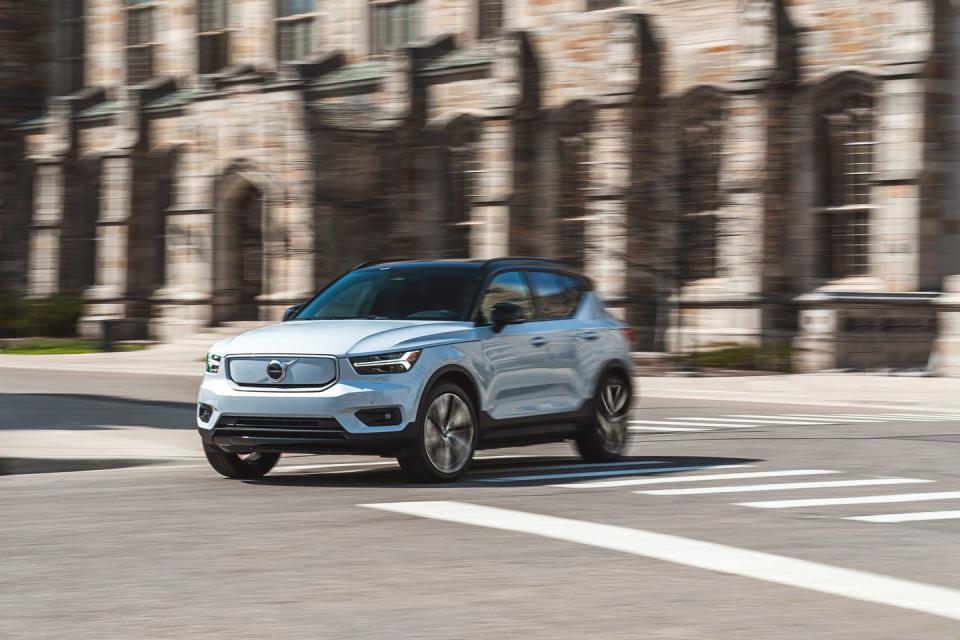Tested: 2021 Volvo XC40 Recharge P8 Is a Stealth EV

Automakers can choose from two basic templates when building an EV: Build one that's just like a gas car they already make (Kia Soul EV, Hyundai Kona Electric) or try something completely new (BMW i3, Jaguar I-Pace, Ford Mustang Mach-E). When Volvo was designing its first EV, it chose the former path. The electric XC40 Recharge P8 looks just like the gas-powered XC40, inside and out. And it rides on Volvo's Compact Modular Architecture platform, just like the gas XC40 (and the Polestar 2), so the Recharge's driving character is remarkably similar to that of the gas car. But some things have changed. The gas XC40 tops out at 248 horsepower, and base models are poky at the track. The Recharge has 402 horsepower from two electric motors, and the acceleration times to prove it.
Specifically, the all-wheel-drive XC40 Recharge reached 60 mph in 4.3 seconds during its trip to our test track and accelerated from 30 to 50 mph in 1.6 seconds. A front-wheel-drive 187-hp XC40 T4 needed 7.8 and 4.0 seconds to complete those tasks. An all-wheel-drive 248-hp XC40 T5 R-Design took 6.3 seconds to reach 60 mph and 3.4 seconds to make it from 30 to 50 mph. The Recharge's other core performance results line up more closely with those of the gas-powered XC40s. The Recharge required 171 feet to come to a stop from 70 mph, while the T5 needed 173 feet. We recorded a stability control-inhibited 0.84 g of lateral grip in the Recharge, the same figure we recorded from a T5 Momentum. (The sport-tuned T5 R-Design notched 0.87 g of stick.)

So, except for those quick acceleration times, the Recharge feels very much like other XC40s we've driven. It has the same well-weighted, reasonably responsive steering that we've enjoyed in other members of the family. But it also has the same jarringly stiff ride, and we'll repeat the recommendation we've made before to avoid the $800 20-inch wheel upgrade.

 Yahoo Autos
Yahoo Autos 